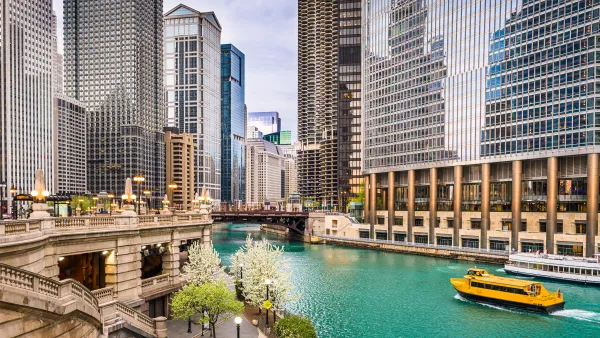Often times, what we think of as a plan is just an elaborate wish.
Our profession is one of the few that is centered on a universal act: making plans. Which is to say that everyone makes plans. Conversely, not everyone dry cleans their own laundry or analyzes commodity markets. Indeed, to plan is human. You and I just happen to do it for a living. Yet, despite our professional status, I continue to find myself and others falling into a classic cognitive trap that often leads to the same old criticisms we hear all the time.
What are these criticisms? There are many but I have a couple favorites. Ever heard of The Million Dollar Shelf? It’s a fabled shelf in your local city hall containing countless unfulfilled plans and ignored studies. The joke is that these studies and plans cost a million dollars to produce and yet not a single dollar’s worth of real improvement has come as a result.
And hey, how about that old chestnut known as The Ivory Tower? This is the pristine, controlled environment where we planners (and fellow academics) conduct our daily lives making impossible decrees in order to achieve unattainable perfections. If you combine these two icons and flavor them with the various characterizations of planners are hopeless optimists, you’ll get something like this:
“Those silly planners are sitting in their ivory tower with their head in the clouds drawing up another unrealistic plan that will just end up on the million dollar shelf.”
Sound familiar?
This time-honored criticism has followed us everywhere. And while it truly, genuinely hurts me to admit it, I find that the criticism has a great deal of truth to it. In fact, when I look at most City-commissioned plans, I see a great deal of ivory towers and head-in-the-clouds optimism.
Enter what psychologists call the planning fallacy. If any of us want to keep the title of “Planner” on our business cards, we should be keenly aware of this common flaw in thinking. The planning fallacy is the mistake whereby a person unconsciously develops a plan or prediction based on the best case scenario instead of the most likely. This bias has been studied by psychologists in a variety of conditions but a common example involves time estimates. Imagine if project planners declare that a new bridge will be built in 24 months only to find the project actually takes 34 months. Why the ten month delay? What went wrong? We often think delays of this sort are the result of lazy contractors or unmotivated government overseers. It’s far more likely that the 24-month time period was unrealistic to begin with, rooted in the idea of a best case scenario where everything goes right.
Which is to say that the project’s real outcome is often not the problem; the estimate (and expectation) was simply bad.
In every instance where this bias appears, the problem is the same: the likelihood of the expected action is ignored or misunderstood. The entire notion of probability is thrown out the window. We become entranced with a best case scenario (a revitalized, vibrant downtown) and then work diligently to assure ourselves we can achieve it. We collect trend data (25-year-olds are moving back to the city!), case studies (the neighboring town transformed itself in just five years!), key conditions (the buildings are ready for business!), and package it all in a way to strengthen our convictions.
In this way, we develop a strong sense of hope, a great vision of the future, and never really consider the probability of success—much like the well-intentioned soul who buys a lottery ticket.
No one would buy a lottery ticket if there weren’t a few winners now and then. Likewise, no one would devise a visionary plan if a few weren’t successful. Make no mistake, a few visionary plans do succeed. But most do not. And once defeated, the majority of these visionary plans are placed next to their fallen siblings on the million dollar shelf. Meanwhile, the critics gloat.
So I ask you: why do plans fail? Is it because of bad politics? Recessions? Many times, it’s because of the planning fallacy. Wishful thinking gets mistaken for a plan and is thus doomed from the start. While writing my own plans, if a trusted partner had asked me what’s the chance this will happen? I would have given them low odds. But the question never came up. We were always so focused on designing and rationalizing the best case scenario (It makes sense! It’s backed by data!) that the idea of probability never came to our minds.
Knowing this, here’s the grand statement for us to all consider: the most successful plan is the one that is most likely to succeed.
Next time you write a plan, whether for the weekly trip to the grocery store or for the retrofit of a five-lane highway corridor, take a cold hard look at the reality surrounding the problem. Combat the planning fallacy. Combat your wishful thinking. Detach yourself from your own desires and consider how likely it is that you will achieve your desired outcome. And then, start to manage your desires before you manage your plan. Lower your expectations. Yes! Really! It’s not a moral sin to do so! Develop an improvement that will work instead of one that will excite; you’ll be surprised how exciting such work can be.

National Parks Layoffs Will Cause Communities to Lose Billions
Thousands of essential park workers were laid off this week, just before the busy spring break season.

Retro-silient?: America’s First “Eco-burb,” The Woodlands Turns 50
A master-planned community north of Houston offers lessons on green infrastructure and resilient design, but falls short of its founder’s lofty affordability and walkability goals.

Delivering for America Plan Will Downgrade Mail Service in at Least 49.5 Percent of Zip Codes
Republican and Democrat lawmakers criticize the plan for its disproportionate negative impact on rural communities.

Test News Post 1
This is a summary

Test News Headline 46
Test for the image on the front page.

Balancing Bombs and Butterflies: How the National Guard Protects a Rare Species
The National Guard at Fort Indiantown Gap uses GIS technology and land management strategies to balance military training with conservation efforts, ensuring the survival of the rare eastern regal fritillary butterfly.
Urban Design for Planners 1: Software Tools
This six-course series explores essential urban design concepts using open source software and equips planners with the tools they need to participate fully in the urban design process.
Planning for Universal Design
Learn the tools for implementing Universal Design in planning regulations.
EMC Planning Group, Inc.
Planetizen
Planetizen
Mpact (formerly Rail~Volution)
Great Falls Development Authority, Inc.
HUDs Office of Policy Development and Research
NYU Wagner Graduate School of Public Service





























